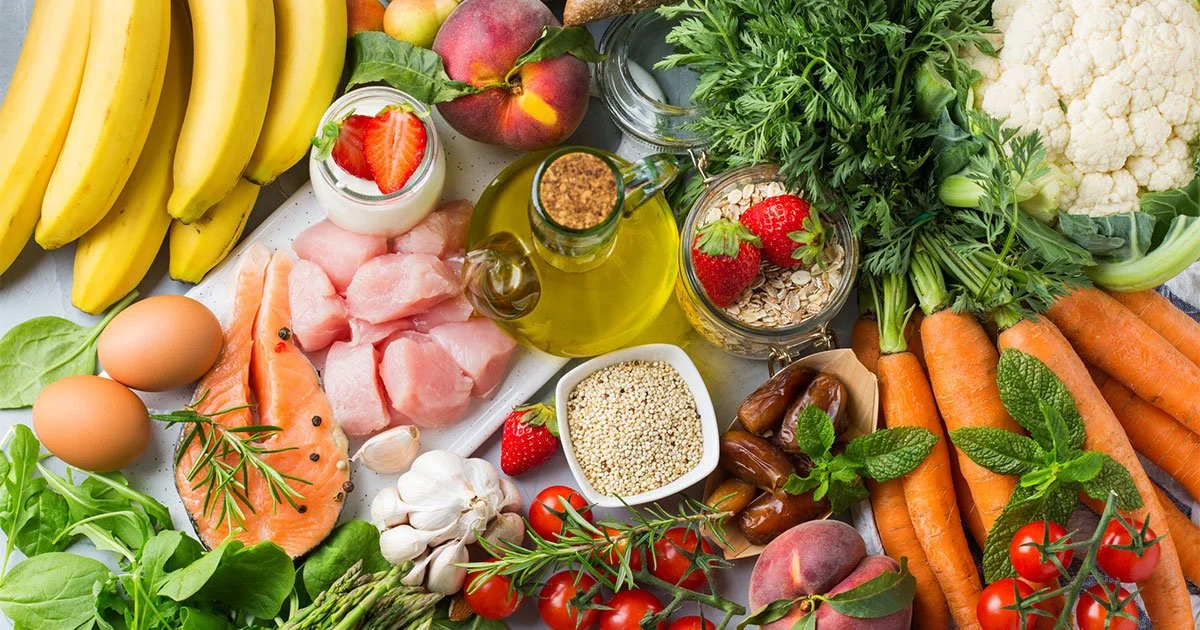Treating C-PTSD with Nutrition
Having spent over two decades going from one trauma to another to another to another, I ended up with Complex Post Traumatic Stress Disorder (C-PTSD). During this time, I often did not have much money to buy food, so my basic nutritional needs were not met. Which also meant that my nutritional needs in relationship to C-PTSD were also not met. I did not even know that I had PTSD, let alone C-PTSD. C-PTSD has a host of additional symptoms in addition to the PTSD symptoms. They include:
difficulty controlling your emotions
feeling very angry or distrustful toward the world
constant feelings of emptiness or hopelessness
feeling as if you are permanently damaged or worthless
feeling as if you are completely different to other people
feeling like nobody can understand what happened to you
avoiding friendships and relationships, or finding them very difficult
often experiencing dissociative symptoms such as depersonalization or derealization
physical symptoms, such as headaches, dizziness, chest pains and stomach aches
regular suicidal feelings
“The symptoms of complex PTSD resemble those of conventional PTSD, but they are more painful and often dominate the lives of those who experience them. Complex PTSD is one of the most debilitating mental health disorders, and yet it remains largely unknown and is only now beginning to receive the attention it deserves.” Brightquest.com
With the enormity of seriousness of the above symptoms, the need for intervention to achieve wholeness is profound. Many may not believe that nutrition is part of that intervention, but it is hugely important. When trauma of severe magnitude occurs, whether it may be one time or over a long period of time, the body suffers. Nutritional intervention is very important because often the side effects from drugs outweigh the benefits.
“It is only in recent times diet has been considered as a possible treatment option for mental health conditions. This is surprising given the key role nutrition plays in the structure and function of our brain and body. Diet is a pragmatic and cost-effective intervention approach. It does not have to contend with the barriers of conventional approaches, has only positive side effects and can be used to support therapy or medication. Improving diet is something everyone can and should do. Diet has the potential to influence biological mechanisms underlying PSTD. PTSD involves inflammation, oxidative stress, brain chemical irregularities, gut microbiome dysbiosis and mitochondrial dysfunction. Building evidence suggests that diets, such as the Mediterranean Diet, can have a positive influence on each of these mechanisms.” Deakin University - Food and Mood Centre
I have been dedicated to eating organic for a long time for a variety of reasons – the most important being managing and healing my C-PTSD. It does take discipline, but I knew I would end up in a very bad situation if I did not commit to diet as a way of healing my C-PTSD. I focus on getting enough high-quality:
Protein
Organic Eggs
Organic Turkey
Organic Chicken
Organic plant protein
Organic Goat kefir and cheese
Fiber
Organic, Sprouted Oatmeal
Acacia fiber
Psyllium
Organic Broccoli
Organic lettuces
Organic cucumbers
Organic carrots
Organic avocado
Organic collard greens
Organic Swiss chard
And color
Organic Blueberry, strawberry, blackberry
Organic purple cabbage
Organic Garnet Yams
In my food choices. I also carry (and drink) a good water wherever I go.
I do a morning smoothie consisting of: Ancient Nutrition protein powder, Thorne amino acid complex, Yerba Prima, Collagen, coconut milk, berries or banana. The amino acid complex fuels my muscles for my swimming and gives me energy throughout my day. I’ll also have a bowl of sprouted, organic oatmeal with a homemade chocolate keto bar (coconut manna, coconut oil, organic cocoa powder, and stevia) that melts into the oatmeal and is luscious and raises my endorphin level.
Summary
C-PTSD is a serious mental disorder. “The Diagnostic and Statistical Manual of Mental Disorders (DSM-5) does not mention complex PTSD… However, the World Health Organization will soon issue the 11th edition of its International Classification of Diseases, and the ICD-11 will include complex PTSD as a true mental health disorder with an established set of criteria for diagnosis. These defining symptoms of C-PTSD are already well-known among mental health experts who study or treat this disorder.” Brightquest.com
“There are no medications to cure PSTD, but medications can be used to alleviate PTSD symptoms related to mood or stress. These medications work by changing levels of brain chemicals, such as serotonin. Medications may not be the treatment of choice due to factors such as response failure, non-compliance, cost or side-effects. Further, medication may not be appropriate for certain groups such as children or those with complex medical needs… Overall, we see that current approaches to PTSD treatment are necessary and can work but are just not enough. It is only in recent times diet has been considered as a possible treatment option for mental health conditions. This is surprising given the key role nutrition plays in the structure and function of our brain and body… Diet is a pragmatic and cost-effective intervention approach. It does not have to contend with the barriers of conventional approaches, has only positive side effects and can be used to support therapy or medication. Improving diet is something everyone can and should do.” Deakin University - Food and Mood Centre
I am proud and honored to say that I am a living example of how diet heals C-PTSD! I also do supplementation as well; however, that will be outlined in another blog post. So, stay tuned. I wish you health and healing. Remember to start with a few things you know that you can implement into your diet TODAY. Then, continue to make more and more and more changes and remember DO NOT GIVE UP – YOU CAN DO IT. YOU CAN HEAL.

